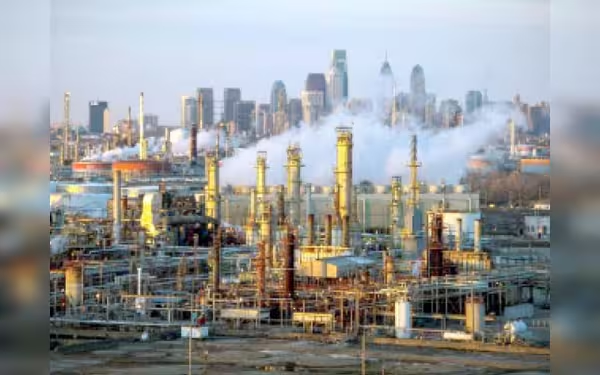Saturday, November 16, 2024 05:38 PM
China's Manufacturing Sector: A New Era for Foreign Investment
- China's manufacturing sector attracts foreign investment.
- Geopolitical tensions influence investment dynamics.
- New industries enhance China's manufacturing capabilities.
 Image Credits: tribune.com.pk
Image Credits: tribune.com.pkChina's manufacturing sector is evolving, attracting foreign investment amid geopolitical tensions and promising growth opportunities.
China's manufacturing sector has long been a cornerstone of its economic growth, attracting foreign investment and technological advancements. Recently, there has been a significant shift in the global landscape, prompting discussions about the potential opening up of this vital sector. With the rise of geopolitical tensions, particularly with countries like the United States, the European Union, and India, the dynamics of investment in China are evolving.
Firstly, it is essential to understand that investors from these so-called "hostile countries" are likely to influence their governments' policies regarding China. The fear of missing out on lucrative opportunities in the Chinese market may lead these investors to lobby against any stringent actions that their governments might consider. This creates a unique situation where economic interests could potentially override political tensions.
Moreover, as new industries begin to establish themselves in China, the country is poised to attract even more foreign investment and cutting-edge technologies. This influx of capital and innovation can significantly enhance China's manufacturing capabilities, making it an even more attractive destination for global investors. The Chinese government has been proactive in creating a favorable environment for foreign businesses, offering incentives and support to those willing to set up operations within its borders.
When it comes to economic benefits, China is undeniably opening its doors wider for foreign investors. The potential for growth in various sectors, including technology, automotive, and consumer goods, is immense. As these industries flourish, they not only contribute to China's economy but also create job opportunities and foster technological exchange.
The opening up of China's manufacturing sector presents a double-edged sword. While it offers significant opportunities for foreign investors, it also raises questions about the long-term implications of such investments in the context of global politics. As the world watches closely, it will be interesting to see how these dynamics unfold and what they mean for the future of international trade and cooperation. Ultimately, the balance between economic interests and political realities will shape the landscape of global manufacturing for years to come.













